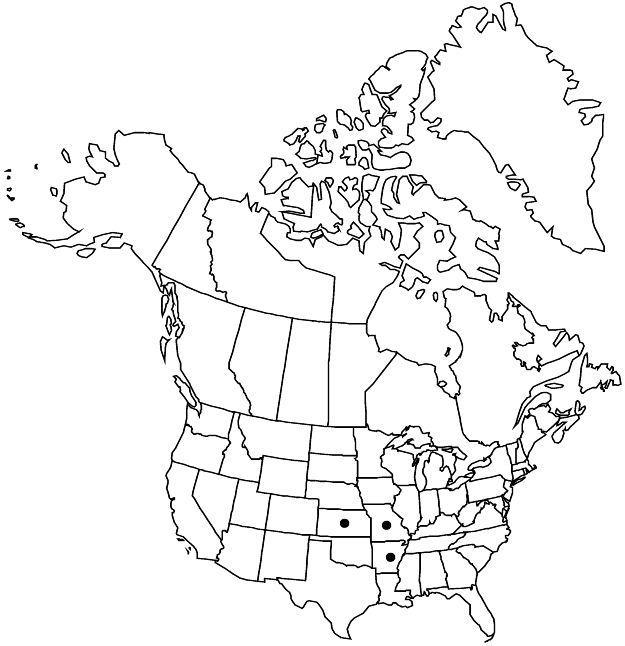Difference between revisions of "Dirca decipiens"
J. Bot. Res. Inst. Texas 3: 494. 2009.
FNA>Volume Importer |
FNA>Volume Importer |
||
| Line 28: | Line 28: | ||
|elevation=100–500 m | |elevation=100–500 m | ||
|distribution=Ark.;Kans.;Mo. | |distribution=Ark.;Kans.;Mo. | ||
| − | |discussion=<p>Dirca decipiens occurs typically in more xeric sites than D. palustris and is frequently associated with Quercus and Juniperus. It is currently known from only four populations.</p><!-- | + | |discussion=<p><i>Dirca decipiens</i> occurs typically in more xeric sites than <i>D. palustris</i> and is frequently associated with <i>Quercus</i> and <i>Juniperus</i>. It is currently known from only four populations.</p><!-- |
| − | --><p>Flowers of Dirca decipiens appear about one week after those of nearby populations of D. palustris. The plants are relatively quick growing in cultivation and seed germination rates appear to be much higher than in other Dirca species. The leaves are parasitized, likely by Leucanthiza dircella Braun (Lepidoptera: Gracillariidae).</p> | + | --><p>Flowers of <i>Dirca decipiens</i> appear about one week after those of nearby populations of <i>D. palustris</i>. The plants are relatively quick growing in cultivation and seed germination rates appear to be much higher than in other <i>Dirca</i> species. The leaves are parasitized, likely by Leucanthiza dircella Braun (Lepidoptera: Gracillariidae).</p> |
|tables= | |tables= | ||
|references= | |references= | ||
| Line 53: | Line 53: | ||
|publication year=2009 | |publication year=2009 | ||
|special status=Endemic | |special status=Endemic | ||
| − | |source xml=https://jpend@bitbucket.org/aafc-mbb/fna-data-curation.git/src/ | + | |source xml=https://jpend@bitbucket.org/aafc-mbb/fna-data-curation.git/src/8f726806613d60c220dc4493de13607dd3150896/coarse_grained_fna_xml/V6/V6_707.xml |
|genus=Dirca | |genus=Dirca | ||
|species=Dirca decipiens | |species=Dirca decipiens | ||
Revision as of 18:49, 18 September 2019
Shrubs to 3 m; branches turning gray, to gray-brown, sericeous. Leaves: petiole 2–4 mm, sericeous; blade obovate to elliptic-oblong, 7.5–9 × 4.5–6 cm, base rounded, margins ciliate with 11–18 cilia per mm, apex round, abaxial surface sericeous, adaxial surface glabrous except on primary veins near petiole. Inflorescences fasciculate, deflexed, (2–)3(–6)-flowered; bracts obovate-oblong, finely white-tan tomentose, flowers sessile or subsessile. Pedicels 0–1 mm, sericeous. Flowers: calyx yellow-green to pale yellow, irregularly (3–)4-lobed, lobes 1–3 mm, margins erose; ovary with apical trichomes. Drupes yellow-green, ovoid to pyriform, 8–9 mm, with 10–17 apical trichomes.
Phenology: Flowering spring (Mar–Apr); fruiting late spring (May–Jun).
Habitat: Northeast- and northwest-facing bluffs above streams, calcareous bluffs
Elevation: 100–500 m
Distribution

Ark., Kans., Mo.
Discussion
Dirca decipiens occurs typically in more xeric sites than D. palustris and is frequently associated with Quercus and Juniperus. It is currently known from only four populations.
Flowers of Dirca decipiens appear about one week after those of nearby populations of D. palustris. The plants are relatively quick growing in cultivation and seed germination rates appear to be much higher than in other Dirca species. The leaves are parasitized, likely by Leucanthiza dircella Braun (Lepidoptera: Gracillariidae).
Selected References
None.